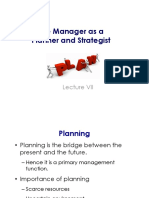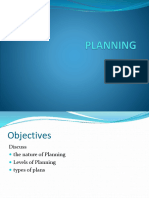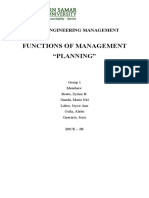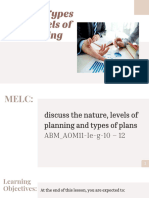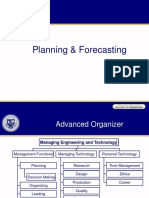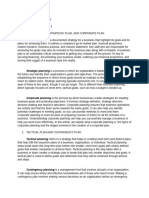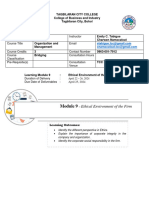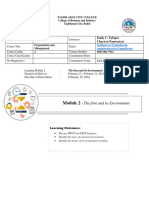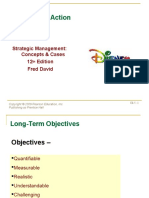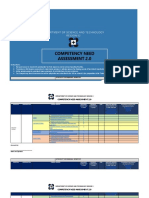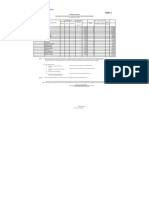0% found this document useful (0 votes)
37 views4 pagesABM104 Module3
The document discusses planning, including the nature of planning, vision and mission statements, goals and objectives, types of plans, contingency planning, the planning process, and planning at different levels in a firm. Key aspects covered include the characteristics of effective vision statements, distinguishing mission statements from goals and objectives, and the five steps in the planning process.
Uploaded by
Keith BumaatCopyright
© © All Rights Reserved
We take content rights seriously. If you suspect this is your content, claim it here.
Available Formats
Download as PDF, TXT or read online on Scribd
0% found this document useful (0 votes)
37 views4 pagesABM104 Module3
The document discusses planning, including the nature of planning, vision and mission statements, goals and objectives, types of plans, contingency planning, the planning process, and planning at different levels in a firm. Key aspects covered include the characteristics of effective vision statements, distinguishing mission statements from goals and objectives, and the five steps in the planning process.
Uploaded by
Keith BumaatCopyright
© © All Rights Reserved
We take content rights seriously. If you suspect this is your content, claim it here.
Available Formats
Download as PDF, TXT or read online on Scribd
/ 4









